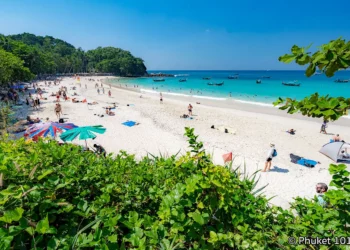The Ramappa Temple located in Palampet is one of the famous temples, built in the Kakatiya style. Made in 1213 in the reign of King Ganapati Deva, it is dedicated to Lord Shiva as Ramalingeswara. Its special bricks and carved stones stand in a quiet valley.
History of Ramappa Temple
The Ramappa Temple got its name from the man who built it, Ramappa, under General Recherla Rudra for King Ganapati Deva. The Kakatiyas ruled Telangana from the 12th to 14th centuries and made fine temples. Palampet, near their main town Warangal, was picked to show their love for Shiva. Words carved on the walls, in Telugu, say it was meant to honor God and last always.
It took about 40 years to finish, a big job for such careful work. The Kakatiyas, who prayed to Shiva, wanted a place for worship and to mark their rule. Long ago, in the 14th century, northern invaders, like the Tughlaqs, tried to break it, but it stood strong. In 2021, it was named a UNESCO World Heritage Site, kept safe for people today.
Architecure of Ramappa Temple
The Ramappa Temple shows Kakatiya building skill, strong and beautiful. Its holy place is shaped like a star, common in South India. The main shrine holds a Shivalingam, said to have come into existence by itself also known as Swyambhu lingam. The temple sits on a stone base, 6 feet high, looking tall. A smaller hall and tower are part of it, all with carvings.
The bricks are light, so light they float on water, made from special clay. This helped the temple last. Walls and pillars have carvings of dancers, musicians, gods, and animals, showing Kakatiya ways. Some show women dancing, wearing old jewels and clothes. The pillars, dark stone, are smooth and catch light during prayers.
A Nandi statue, cut from one stone, faces the shrine. It is 9 feet long, with carved decorations for Shiva. Stone screens with holes let light in, making the hall feel calm. The temple is built to stay safe from earthquakes, with a sand layer under the base and stones cut to fit tight, no paste needed. It has lasted 800 years. Wall carvings show Shiva’s stories, the Ramayana, and old tales, teaching through art.
Festivals
The Ramappa Temple is a place for daily worship, following Shiva’s path of worship. Each dawn, the Shivalingam gets a bath with milk, water, and sandalwood. Priests sing old songs, and people give flowers and bilva leaves, special for Shiva.
Maha Shivaratri is the main festival, with thousands of devotees in attendance. The night has prayers, music, and walks, the Shivalingam covered in flowers and lamps. People fast and sing to praise Shiva’s power. Other days, like Karthika Purnima and Deepavali, bring oil lamps that make the temple bright in the valley. The Shivalingam’s power draws those who seek Shiva’s care and grace. Many visit with temples nearby, like the Thousand Pillar in Hanamkonda, for a holy journey.
Why It Stands Out
The temple is not just for prayer; it keeps old Kakatiya life alive. Carvings show music, dance, and jewels from those days. It was a place for art, where singers and poets shared tales. Kakatiya kings held big days here, mixing faith and community.
It stayed whole through multiple attacks, showing its strong build. Invaders could not break the main shrine or carvings, thanks to Kakatiya work. As a UNESCO site, it brings people who study old buildings and art. Near Warangal, it joins the Warangal Fort and Thousand Pillar Temple, making a history trail.
How to Visit
The Ramappa Temple is in Palampet, 77 km from Warangal, 200 km from Hyderabad, reached by bus or car. November to February is best, at 70°F to 85°F, cooler than the 100°F of March to May. Rain from June to September makes paths slippery, so wear sturdy shoes.
Wear clothes covering shoulders and knees, and take off shoes before the holy place. No photos inside, to keep it sacred. The temple opens at 6 AM, and early visits are quiet. Maha Shivaratri is busy, so book a place in Warangal or Mulugu early. Men at the gate tell the temple’s past for a small coin. Ramappa Lake is nearby for rest. Stalls sell Telugu food like pulihora and dosa, good for the trip. Visiting the Warangal Fort or Thousand Pillar Temple, not far, makes a full day.
Keeping it Whole
The Archaeological Survey of India looks after the temple, fixing old carvings and keeping it strong. Local people help with big days and care, making it alive. Telangana leaders tell its story to visitors, showing its art and faith.
Last Thoughts
The Ramappa Temple in Palampet is a sacred and a deep heritage site in Telangana, holding 800 years of Kakatiya faith, skill, and devotion calling thousands from all around the world and making it a must visit for those visiting Telangana.










